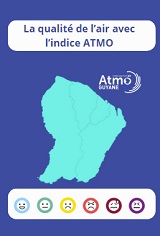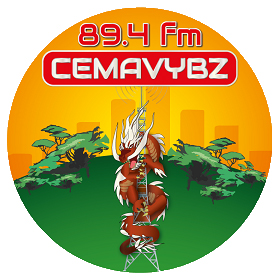Blada.com
vendredi 19 décembre
Boîtes aux lettres
Courrier des lecteurs
Petites annonces
Emploi / Formation
Covoiturage
Infos citoyennes
Infos citoyennes
10/01/23
Les habitants de Trois-Sauts se forment aux gestes qui sauvent
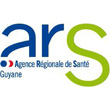 La Croix-Blanche a formé une soixantaine d’habitants des différents villages, la semaine dernière. Cette action, la première du genre, a été conçue à partir des besoins exprimés par les habitants, en fonction des situations auxquels ils se retrouvent confrontés. Elle a été menée dans le cadre du « plan mieux-être », porté par l’Agence Régionale de Santé. Elle sera renouvelée et déployée sur d’autres sites de l’intérieur, dans le cadre d’un appel à projets.
La Croix-Blanche a formé une soixantaine d’habitants des différents villages, la semaine dernière. Cette action, la première du genre, a été conçue à partir des besoins exprimés par les habitants, en fonction des situations auxquels ils se retrouvent confrontés. Elle a été menée dans le cadre du « plan mieux-être », porté par l’Agence Régionale de Santé. Elle sera renouvelée et déployée sur d’autres sites de l’intérieur, dans le cadre d’un appel à projets.

Un adulte qui se coupe dans son abattis, un enfant qui se noie dans l’Oyapock, un autre qui s’étouffe en avalant une graine de wassaï, une victime de brûlure ou de morsure de serpent ou une personne qui fait une tentative de suicide… Voilà un ensemble de situations auxquels une soixantaine d’habitants de Trois-Sauts, à huit heures de pirogue en amont du bourg de Camopi, ont été confrontés, la semaine dernière, dans le cadre d’une formation aux gestes qui sauvent, dispensée par la Croix-Blanche. Cette formation a été financée par l’ARS, dans le cadre du plan en faveur du mieux-être et de la santé globale des habitants de l’intérieur.
Ce « plan mieux-être » succède au programme BEPI (bien-être des populations de l’intérieur). Les chefs coutumiers, les associations, les personnels du centre délocalisé de prévention et de soins avaient demandé à ce que les habitants puissent se former aux premiers secours, afin de faire face aux accidents et aux tentatives de suicide. Ce premier test conduit sur une semaine, auquel ont assisté et participé Clara de Bort, directrice générale de l’ARS, Steven Kuzan, référent aux communes de l’intérieur, et Loïc Gavens, de l’état-major interministériel de zone de défense et de sécurité (Emiz), a permis de constater si les habitants étaient intéressés par la formation et si elle était réalisable dans un secteur aussi isolé. Ce fut le cas.
« C’est un peu plus compliqué parce qu’il faut tout transporter, tout faire à pied mais ce n’est pas la première fois que l’on forme en site isolé, souligne Yannick Brassier, vice-président de la Croix-Blanche et formateur. Nous avons choisi la formation aux gestes qui sauvent, sur une demi-journée, plutôt que le premier niveau des premiers secours civils (PSC1) pour toucher plus de monde et être plus efficaces. Nous avons surtout réfléchi à ce dont les habitants ont besoin, aux situations qu’ils connaissent et au fait qu’ils vivent en secteur isolé. Il faut que les gestes soient efficaces, rapides et qu’ils puissent être réalisés tout seul, sans équipement de secours. »
Dans chacun des six villages de Trois-Sauts, dix à douze personnes ont suivi à chaque fois la formation. « Dans les faits, beaucoup d’autres personnes s’installaient autour et observaient, constate Yannick Brassier. Les participants à la formation n’hésitaient pas à réessayer, à chercher à s’améliorer. On commençait toujours par leur demander ce qu’ils feraient dans telle situation. Ils avaient déjà l’idée, mais pas forcément la bonne technique pour la réaliser. » La formation a aussi permis de travailler sur des brancards de fortune, sur les techniques pour ramener un blessé quand on est seul avec lui ou sur les manières de se protéger en apportant les secours.
« Ce test est vraiment réussi, se réjouit Clara de Bort. Nous allons le déployer désormais à Trois-Sauts et dans d’autres communes de l’intérieur. » Dans les prochaines semaines, l’ARS lancera un appel à projets pour la formation aux gestes de premiers secours des habitants.

 La Croix-Blanche trained around sixty inhabitants of different villages last week. This action, the first of its kind, was designed based on the needs expressed by the inhabitants, depending on the situations they find themselves confronted with. It was conducted as part of the "well-being plan", supported by the Regional Health Agency. It will be renewed and deployed on other interior sites, as part of a call for projects.
La Croix-Blanche trained around sixty inhabitants of different villages last week. This action, the first of its kind, was designed based on the needs expressed by the inhabitants, depending on the situations they find themselves confronted with. It was conducted as part of the "well-being plan", supported by the Regional Health Agency. It will be renewed and deployed on other interior sites, as part of a call for projects.

An adult who cuts himself in his giblets, a child who drowns in the Oyapock, another who chokes by swallowing a seed of wassaï, a victim of burn or snakebite or a person who makes a suicide attempt … Here is a set of situations with which about sixty inhabitants of Trois-Sauts, eight hours by canoe upstream from the town of Camopi, were confronted last week, within the framework of training in life-saving gestures, provided by the White Cross. This training was funded by the ARS, as part of the plan to promote the well-being and overall health of inhabitants of the interior.
This "well-being plan" succeeds the BEPI program (well-being of interior populations). The customary chiefs, the associations, the staff of the delocalized prevention and care center had asked that the inhabitants be trained in first aid, in order to deal with accidents and suicide attempts. This first test carried out over a week, attended and participated in by Clara de Bort, Director General of the ARS, Steven Kuzan, referent to the municipalities of the interior, and Loïc Gavens, from the interministerial defense zone staff and security (Emiz), made it possible to see if the inhabitants were interested in the training and if it was feasible in such an isolated area. It was.
"It's a little more complicated because you have to transport everything, do everything on foot, but this is not the first time that we have trained in an isolated site, underlines Yannick Brassier, vice-president of the White Cross and trainer. We have chosen training in lifesaving gestures, over half a day, rather than the first level of civil first aid (PSC1) to reach more people and be more effective. Above all, we thought about what the inhabitants need, the situations they experience and the fact that they live in an isolated area. The actions must be effective, fast and can be performed alone, without emergency equipment. »
In each of the six villages of Trois-Sauts, ten to twelve people took the training each time. “In fact, a lot of other people were sitting around and watching, notes Yannick Brassier. The participants in the training did not hesitate to try again, to seek to improve. We always started by asking them what they would do in such a situation. They already had the idea, but not necessarily the right technique to carry it out. The training also made it possible to work on makeshift stretchers, on techniques for bringing back an injured person when you are alone with him or on ways to protect yourself by providing help.
"This test is really successful," rejoices Clara de Bort. We are now going to deploy it in Trois-Sauts and in other towns in the interior. In the coming weeks, the ARS will launch a call for projects for training residents in first aid.

Raccourcis

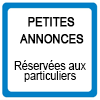
passer une petite annonce
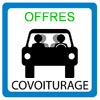
passer une annonce de covoiturage
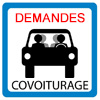

passer une annonce d’emploi

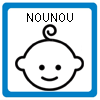
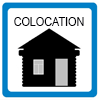
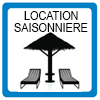
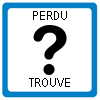
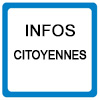
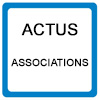
associations, postez vos actualités
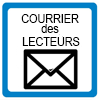
participez au courrier des lecteurs
La Guyane c’est ici
La qualité de l’Air avec
ATMO
Photothèque

Lancements 2022
Vol 259 Ariane 5



